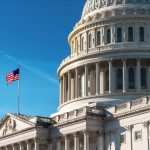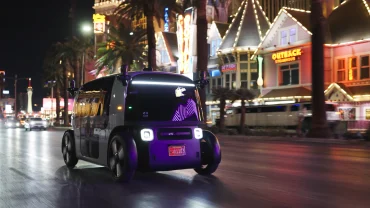
- Mobility Tech
Tesla Invests $8 Billion in U.S. Manufacturing and Infrastructure
6 minute read

Tesla’s manufacturing expansion aims to boost annual vehicle production to 20 million units while advancing autonomous technology development
Three Key Facts
- $8 billion U.S. investment planned by Tesla for the current fiscal year, focusing on manufacturing infrastructure and research and development capabilities
- 20 million vehicles annually by 2030 represents Tesla’s ambitious production target, requiring capital expenditures of $7-9 billion per year through 2025
- Robotaxi service launch in Austin expected to begin next year with the Cybercab model, potentially adding $1 trillion to company valuation according to analysts
Introduction
Tesla commits $8 billion to United States infrastructure and manufacturing expansion during the current fiscal year, marking the latest phase in the electric vehicle manufacturer’s aggressive domestic growth strategy. The investment announcement, made through a post on X, represents a significant escalation of the company’s capital expenditure program as it pursues ambitious production targets and autonomous driving capabilities.
The funding builds upon Tesla’s existing $44 billion in cumulative U.S. capital expenditures since its founding. The company positions this investment as essential for scaling manufacturing capacity and advancing technological development across its electric vehicle and energy storage divisions.
Key Developments
Tesla’s investment timeline reflects an accelerating capital deployment strategy. The company spent $10 billion on capital expenditures in the previous fiscal year, establishing the foundation for the current $8 billion commitment. This follows a pattern of increasing investments from $6.48 billion in 2021 to $7.16 billion last year.
The company’s 10-K filing reveals projected annual capital expenditures of $7-9 billion for 2024 and 2025, supporting its target of producing 20 million vehicles annually by decade’s end. Tesla emphasizes that spending pace will vary based on project milestones, priorities, and inflation factors.
Manufacturing expansion focuses on Model Y production scaling and new model introductions, including the dedicated robotaxi vehicle Cybercab. Tesla simultaneously advances its Full Self-Driving technology and autonomous vehicle platform development. Production plans include ramping Tesla Semi output to 50,000 units annually by 2024 and continuing Cybertruck manufacturing expansion.
Market Impact
Tesla shares declined 15.9% year-to-date in 2025 despite the substantial investment commitments, reflecting investor concerns about converting capital expenditures into sustained profitability. The stock performance contrasts with analyst optimism regarding the company’s long-term autonomous vehicle prospects.
Capital expenditure data shows Tesla spent $2.78 billion in the period ending December 2024, representing a 20.5% year-over-year increase. This acceleration demonstrates the company’s commitment to maintaining production leadership amid intensifying electric vehicle competition.
Market analysts view Tesla’s robotaxi development as a potential catalyst for significant valuation expansion. The autonomous vehicle platform represents a shift from traditional automotive manufacturing toward mobility services and recurring software revenue streams.
Strategic Insights
Tesla’s investment strategy emphasizes vertical integration across its supply chain, reducing external dependencies while accelerating product development cycles. This approach enables greater cost control and manufacturing flexibility compared to traditional automotive manufacturers relying on extensive supplier networks.
The company’s expansion into artificial intelligence and autonomous driving technology positions it beyond conventional vehicle manufacturing. Tesla develops capabilities spanning robotaxi services, humanoid robotics through its Optimus project, and energy storage solutions including battery systems and solar technology.
Software development represents a critical competitive advantage, with Full Self-Driving capabilities and premium connectivity services generating recurring revenue streams. This model differentiates Tesla from traditional automakers dependent primarily on vehicle sales for profitability. According to Investing.com, the investment underscores Tesla’s commitment to maintaining technological leadership across multiple clean technology sectors.
Expert Opinions and Data
Wedbush analyst Dan Ives expresses bullish sentiment regarding Tesla’s robotaxi potential, suggesting the autonomous vehicle launch could double the company’s market capitalization to $2 trillion by 2026. His analysis positions the robotaxi service as transformational for Tesla’s business model and long-term valuation prospects.
Tesla’s official statement emphasizes its domestic investment commitment: “Tesla has been focused on investing in manufacturing and infrastructure in the US since our inception and till the beginning of the year, we had invested ~$44B of capital expenditures.” The company highlights continuity in its capital allocation strategy while scaling investment levels.
Industry analysts note Tesla’s strategic positioning within environmental, social, and governance investment trends, attracting green financing opportunities while reinforcing its sustainable technology leadership. This alignment supports access to favorable funding sources for continued expansion initiatives.
Conclusion
Tesla’s $8 billion investment commitment demonstrates confidence in electric vehicle market growth and autonomous driving technology development despite current stock performance challenges. The funding supports critical manufacturing capacity expansion while advancing software capabilities that differentiate Tesla from traditional automotive competitors.
The investment strategy balances immediate production scaling needs with long-term technology development, particularly autonomous vehicle capabilities expected to generate new revenue streams. Tesla’s continued capital deployment signals sustained commitment to maintaining market leadership across multiple clean technology sectors while navigating intensifying competition and regulatory scrutiny.








